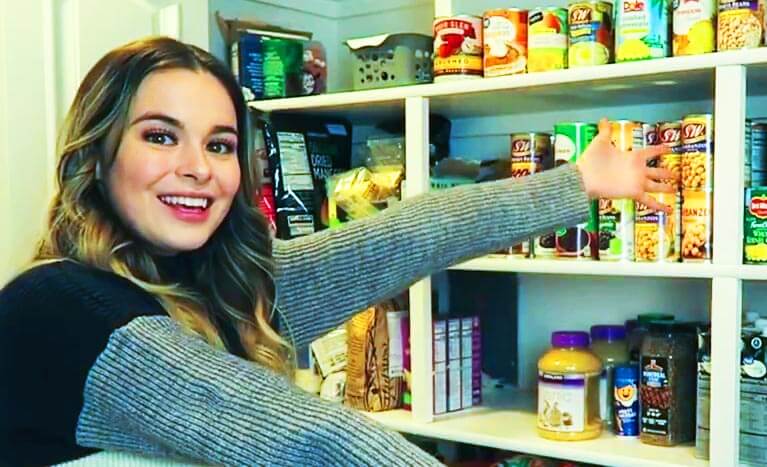Food storage has been a popular topic since Covid-19 creeped into our lives in 2020. It seems everyone encountered empty shelves and panic at the store. My local stores were chaotic as frantic shoppers lined up cart to cart, ramming each other and fighting for that last bag of dried kidney beans (beans they likely will never use.) I remember making eye contact with an older woman during the mayhem, and we both burst out laughing about the frenzied chaos.
I decided—after being immersed in that brief societal breakdown—that I will never allow my pantry to run down to the bare minimum. When SHTF, I plan to have a functional, rotating food storage. I want to do more than just survive a bad situation; I want to thrive. Living off beans and rice doesn’t sound ideal. I could do it, but I'd rather eat a normal diet if and when an apocalypse arrives. I can accomplish this with proper food storage.
How do I make a food storage?
Start small and begin in the pantry. Building the proper food reserves doesn’t take exorbitant amounts of money. When favorite food items go on sale, buy extra. When beans are on sale (a personal favorite), I buy extra cans. I consume lots of beans, so they go straight to my pantry and rotate through as I consume them. If you buy extra, you will slowly build your food storage.
What are food storage layers?
Proper food storage is multi-layered: 0-3 months, 3-12 months, and long term (1-30 years.) I operate my food storage by having 0-3 month foods located in an accessible pantry – these foods I consume daily and they could supply me with meals for up to 3 months. The next layer is overflow from the pantry I consume and replace immediately. Make a goal to have a short term stock of food that can last a year if SHTF. Long term food storage is food with a very long shelf life. For example, I purchase flour, sugar, and oats in #10 cans from the Bishop Storehouse of The Church of Jesus Christ of Latter-day Saints. These #10 cans last 25-30 years. Mylar bags are another reliable way to store goods long term.
What are pantry staples?
These items are always on hand. Buy in bulk and store in 5 gallon buckets with gamma lids, or have them ready to rotate through the pantry when consumed: flour, sugar, salt, spices, brown sugar, powdered sugar, yeast, baking soda, baking powder, baking cocoa, chocolate chips, butter, oil, cornmeal, vanilla, powdered dairy, extracts, nuts, grains. I have a surplus of all of these items. Costco is a good place to start for buying bulk—they offer a majority of these items in bulk quantities at a reasonable price!
What containers do I use for food storage?
I would recommend using glass jars, mylar bags, and 5 gallon buckets. I use glass jars to store dried fruit, nuts, and other dried goods right in my pantry. Five gallon buckets can be utilized for all layers of your food storage. In the pantry, you can keep flour or other dried goods in a 5 gallon bucket and scoop from it when your immediate storage runs out. Make sure to seal these buckets with gamma lids as they keep the oxygen out! For long term storage, I would recommend Mylar bags with oxygen absorbers for doing it yourself.
Beware of temperature, oxygen, and moisture in your food storage layers. These three things can ruin your food storage! I also learned that you don’t want to store 5 gallon buckets directly on cement because that will create moisture inside the bucket. Make sure your food storage is stored in proper temperature and containers and away from water!
Have an explicit plan for your food storage. Don’t end up with excessive amounts of food that will go bad or sit there unused for years to come. As soon as you get those dried beans home from the store, can them or make sure you know how to cook them in a SHTF scenario. Stock up on food items you enjoy; avoid those you don't. For example, I hate coconut so I don't buy coconut flakes. No matter what kind of societal breakdown, I won’t be eating coconut. Like I said, I don’t want to merely survive, I want to thrive.
I did a pantry tour on YouTube to show what I keep on hand in my kitchen. I actively rotate through these cans and constantly replenish my stock. My longer term food storage is layered and I replenish my pantry from my middle layer. I actively add to the middle layer to maintain a year’s stock of food. The long term food storage includes #10 cans from the Bishop Storehouse. I have purchased Mylar bags, 5 gallon buckets, and a vacuum sealer, so I will provide more details about food storage and preservation in future vlogs.

